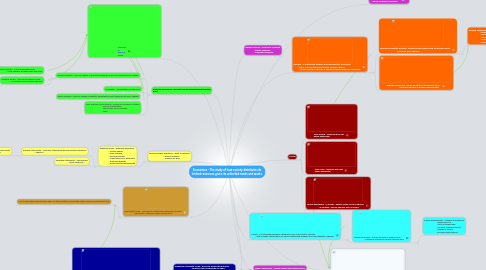
1. Elasticity of Demand Graph
2. Supply - A relationship between a products price and quantity supplied. - Law of supply states there is a direct relationship between price and quantity supplied.
2.1. Changes in Supply - Shown by shifts in supply curve. - Caused by changes in supply determinants.
2.1.1. Supply Determinants - Number of producers. - Resource price. - State of technology. - Prices of related products. - Change in nature. - Producer expectations.
3. Demand - A relationship between price and quantity of demand. - Price and quantity demanded are inversely related. - Market demand is the sum of quantities dmenaded by all consumers.
3.1. Changes in Quantity Demand - Shown by movements along the demand curve. - Caused by price changes.
3.1.1. Demand Determinants - Number of buyers. - Income increase/decrease. - Price of complimentary products. - Price of subsitute products. - Consumer preferences. - Consumer expectations.
3.2. Changes in Demand - Shown by shifts on the demand curve. - Caused by changes in demand determinants.
4. Adam Smith - Specialization of labour increases production.
5. Production Possibility Model - Economy makes two products. -Resources and technology are fixed. -Resources are employed to their fullest capacity.
5.1. Production Possibility Curve - Highlights scarcity of resources. -Has a concave shape, reflects the law of increasing opportunity costs.
6. Market Systems - Traditional economy. - Market economy. - Command economy.
7. Basic Economic Questions - What to produce. - How to produce. - Produce for who.
7.1. Economic Goals - Economic efficiency. - Income equity. - Price stability. - Full employment. - Viable balance of payments. - Economic growth. - Environmental sustainability.
7.1.1. Positive Statements - Scientific statements about economic behaviour. - "What is".
7.1.1.1. Economic Model - Simple economic reality. - Inverse relationship.
7.1.2. Negative Statements - Value based. - "What should be".
8. Opportunity Cost - The cost of choosing one thing over another. - The utility of the best forgone alternative.
8.1. Law of Increasing Opportunity Costs - As the quantity of something rises so does its opportunity cost.
9. Types of Resources - Capital, human and entrepreneural.
10. Pricing
10.1. Price Ceiling - Maximum price set below equilibrium.
10.2. Price Floor - Minimum price set above equilibrium.
10.3. Market Equilibrium - In surplus - Excess supply, price is lowered. - In shortage - Excess demand, price is raised.
11. Elasticity of Demand = percent change demand/percent change price
11.1. Inelastic Demand - Percent change in quantity demanded is less than percent price change.
11.1.1. Perfectly Inelastic - Vertical demand curve. - Price changes, demand stays the same.
11.1.2. Perfectly Elastic - Horizontal demand curve. - Price stays same, demand changes.
